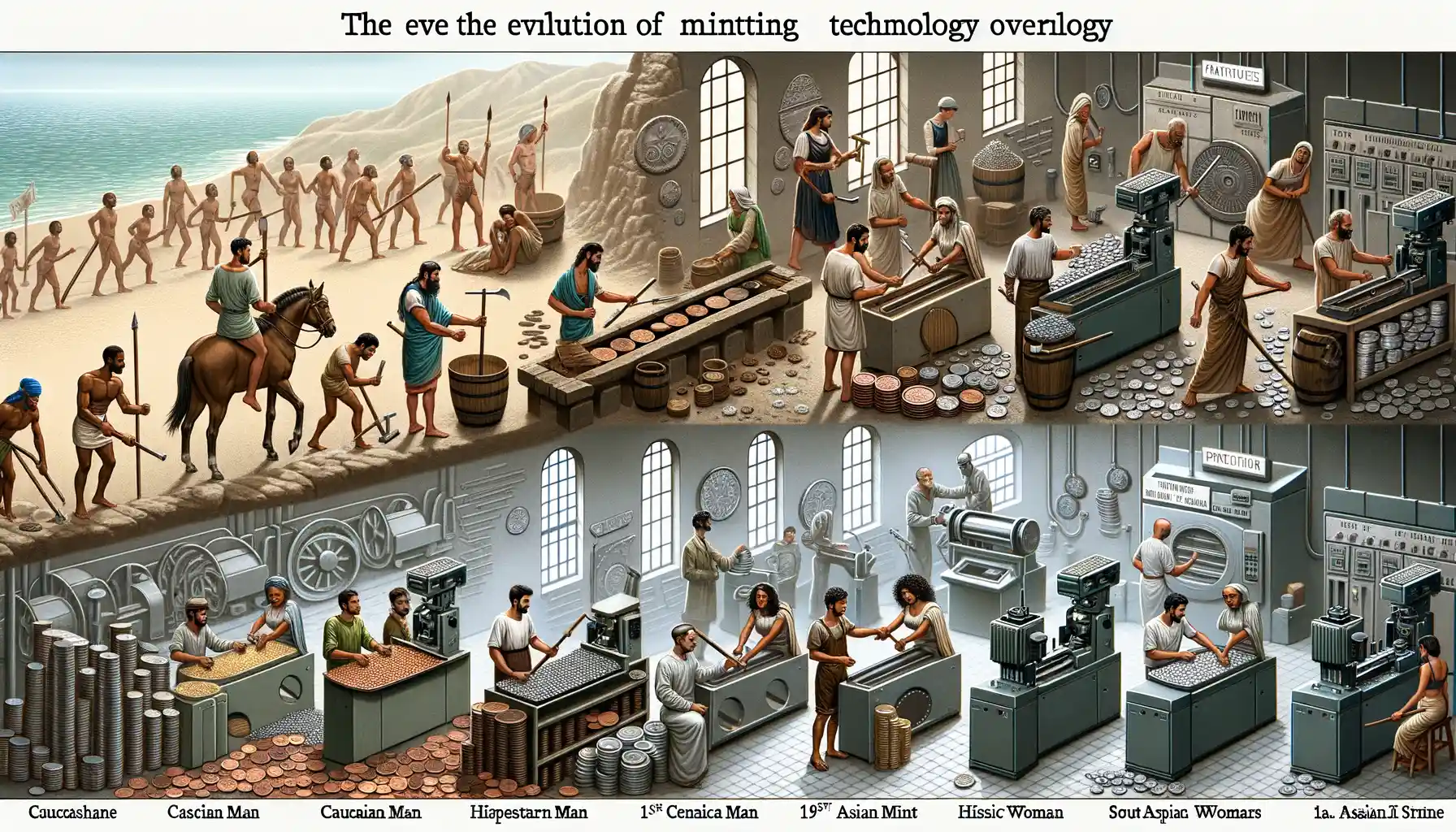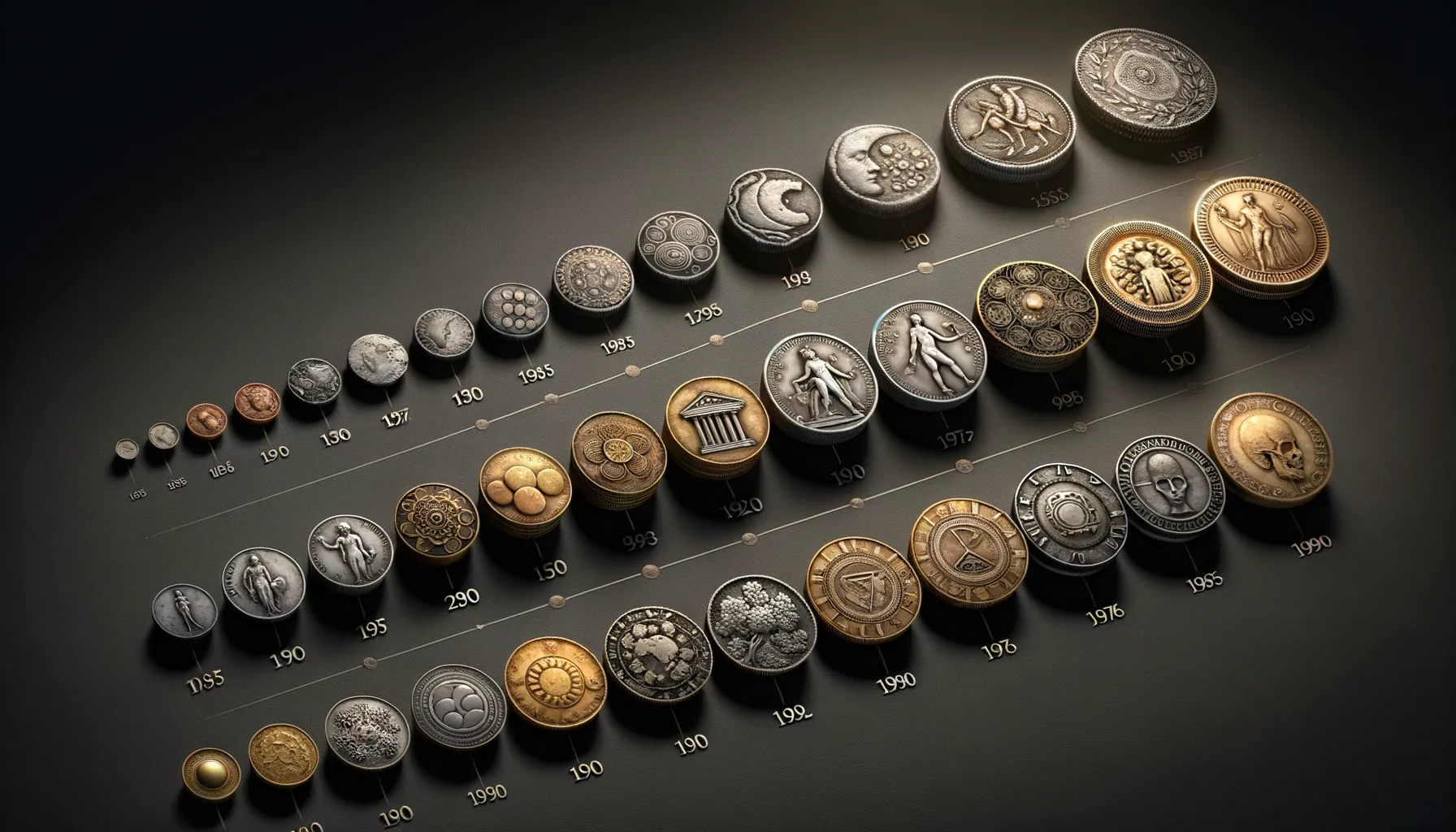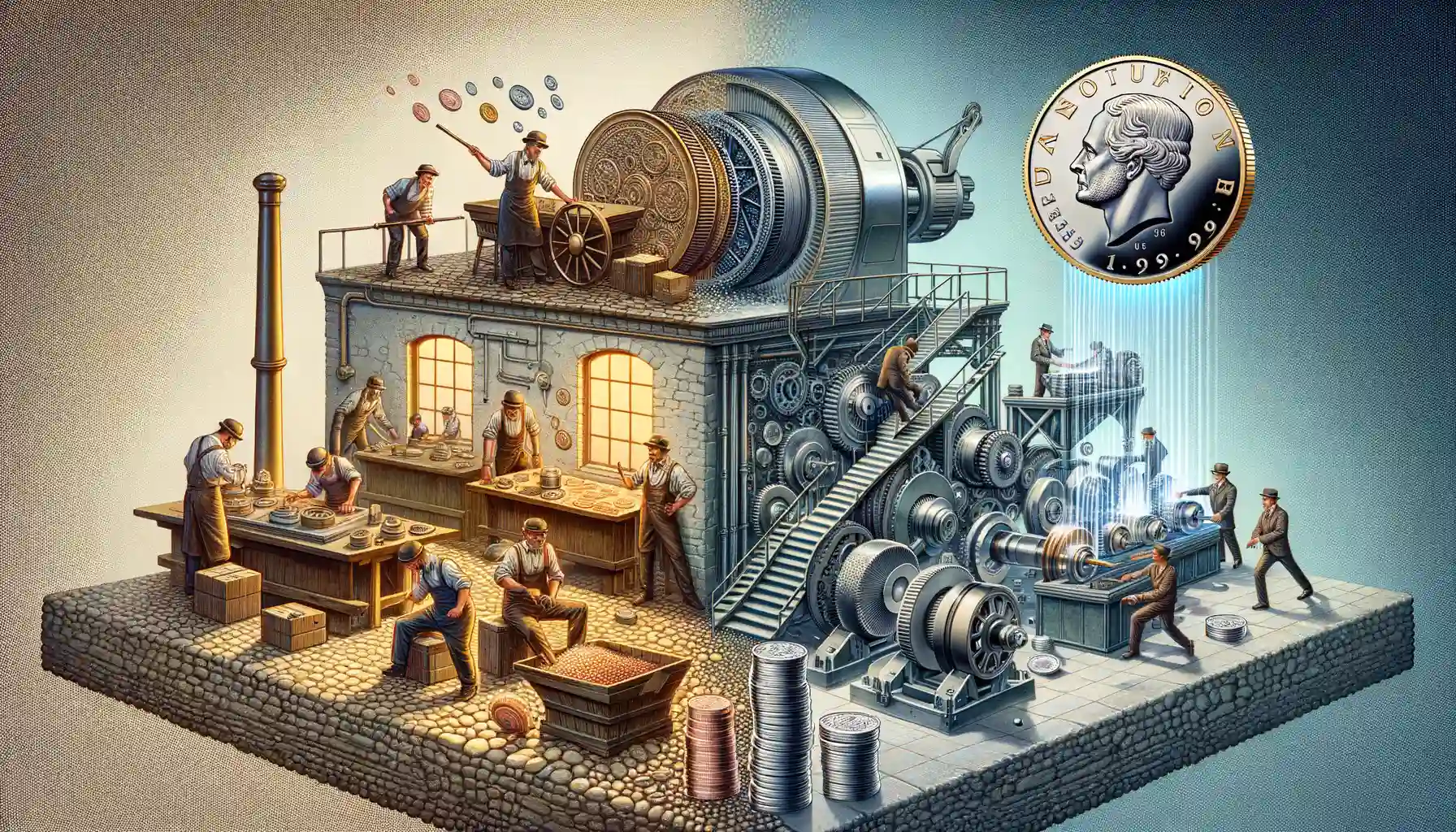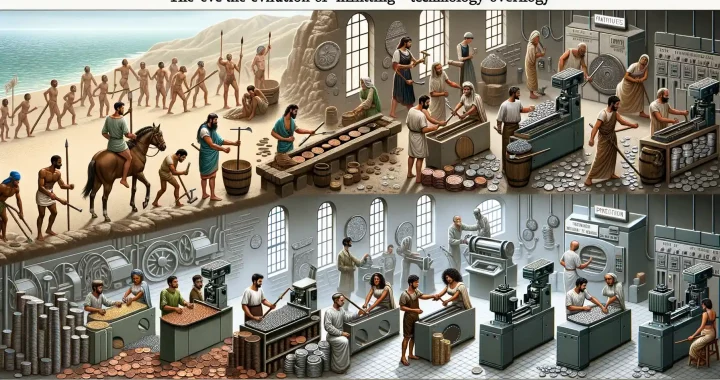Origins and Early Development of Coin Minting
From Barter to Brilliant Coins
Imagine a world where trade meant lugging sacks of grain or livestock around. Awkward, right? That was life before the first coins emerged. Somewhere around 600 BCE, in the bustling marketplaces of ancient Lydia (modern-day Turkey), humankind struck gold—or rather, **electrum**, a natural mix of gold and silver. These early coins weren’t just shiny baubles; they were revolutionary symbols of trust and value. Suddenly, you didn’t need to trade goats for textiles. A stamped piece of metal could seal the deal!
The Lydians, led by their famed King Croesus, were the first to standardize coins, using molds and simple dies to imprint designs. Each coin had a story: an emblem of authority or a divine figure, whispering tales of rulers and gods with every glint in the sunlight. What began as convenience quickly evolved into an art form.
The First Sparks of Creativity
The earliest minters were nothing short of artists and engineers combined. To bring order to chaos, they focused on key innovations:
- Crafting coins with uniform weights, ensuring fairness in trade.
- Embedding intricate carvings or stamps to prevent forgery—a critical leap for trust in commerce.
These primitive coins were struck by hand, one blow at a time, each a labor of love—and necessity. It’s incredible to think how this small idea reshaped economies, cultures, and history itself, setting the stage for the breathtakingly complex minting processes we admire today.
Key Innovations in Minting Technology Over Time

The Birth of the Screw Press: A Turning Point
Imagine this: the year is 1550, and coin production is about to get a serious upgrade. Enter the revolutionary **screw press**, a machine that transformed minting from a labor-intensive craft into something precise and efficient. Before this, coins were hammered by hand—an exhausting and inconsistent process. But the screw press changed everything, using mechanical force to create sharper designs and consistent shapes. It wasn’t just a tool; it was a promise of progress and reliability in every coin.
And here’s the kicker: this innovation became the gold (or silver!) standard for centuries, setting the stage for modern minting as we know it. Picture a blacksmith hammering away compared to a craftsman cranking the screw press—it’s a leap as big as quills to keyboards.
Laser Precision and Steam Power Join the Game
Fast forward to the Industrial Revolution, where steam-powered coin presses took speed to unimaginable heights. These machines made it possible to mint thousands of coins in a single day, changing the idea of currency production forever.
Then came the modern marvel of **laser technology**. Today, lasers are used to etch incredibly intricate designs with jaw-dropping accuracy. Some of the smallest details—like micro-text or tiny images visible only under magnification—are made possible because of lasers.
Here’s a list of some stunning breakthroughs over the centuries:
- Collar dies introduced in the 18th century to produce milled edges, making coins harder to counterfeit.
- Introduction of **high-speed coining presses** in the 20th century, capable of striking upwards of 600 coins per minute.
- 3D modeling tools that allow artists to visualize coin designs before any physical minting happens.
Every twist and turn of minting history tells a story of human ingenuity, reminding us how far we’ve come—and where imagination might take us next.
The Evolution of Coin Materials and Designs

From Shiny Gems to Everyday Metals
Coins are tiny storytellers, carrying the weight of history in their design and material. Imagine holding an ancient coin — a little treasure forged from gleaming electrum, a natural mix of gold and silver that once bedazzled ancient civilizations. Over centuries, the materials of coins reflect humanity’s changing priorities: first rarity and beauty, then durability and practical use.
Let’s talk about transitions. Early coins were crafted from precious metals like gold, silver, and copper — a nod to their value at the time. But as economies grew and trade exploded, survival demanded something tougher and more affordable. Enter base metals: nickel, zinc, and bronze became the unsung heroes, making coins rugged workhorses of daily commerce.
- Gold sovereigns: Symbols of power and wealth, once clutched by royalty.
- Steel-coated pennies: Soldiers of the industrial age, cheap but reliable.
- Polymer-infused designs: The sleek, futuristic face of modern currency.
What’s fascinating is how coin designs evolved hand-in-hand with these materials. Ancient symbols of gods and rulers gave way to intricate engravings of machines, animals, and even national landmarks. Every coin feels like a snapshot of its era, wouldn’t you agree?
Modern Coin Minting: Techniques and Processes

The Art of Precision: How Coins Are Crafted Today
Modern coin minting is nothing short of a symphony of cutting-edge technology and meticulous craftsmanship. Imagine a bustling facility where brilliant flashes of metal transform into the tokens of our economies, pocket-sized works of art that pass through countless hands daily. It’s not just engineering; it’s alchemy with a touch of magic.
The process kicks off with the creation of a master die, which is engraved with stunning precision, often using lasers so exact they can etch details thinner than a human hair. From there, the magic happens:
- Blanks, or plain discs, are punched from massive sheets of metal—silver, gold, nickel—all carefully selected for durability and luster.
- Each blank is softened through heat, then washed and polished until they gleam like tiny mirrors.
But here’s where the drama unfolds: under immense pressure (we’re talking hundreds of tons per stamp), these shining blanks are struck with their designs. Every press embeds intricate motifs, national emblems, and even microscopic security features.
The result? Pristine coins that sparkle with heritage and innovation, ready to tell their own stories in your wallet. This isn’t just manufacturing—it’s modern ingenuity, pressed and polished to perfection.
Impact of Technological Advances on Coin Production

Redefining Coin Creation: Machines and Minds at Work
Imagine a world where coins were still hammered by hand—meticulous, yes, but painfully slow. Now, fast forward to the present. Thanks to technological breakthroughs, coin production has become an extraordinary blend of artistry and precision engineering. Every penny, dime, or commemorative piece that jingles in your pocket is crafted with cutting-edge tools that Michelangelo himself could only dream of.
Modern minting machines are marvels of ingenuity, transforming raw materials into gleaming currency at breathtaking speeds. With innovations like computerized systems, lasers, and hydraulic presses, today’s coin production feels more like a scene from a futuristic movie than an industrial process.
- Laser engraving has redefined the level of detail achievable in coin designs, producing textures so fine you might need a magnifying glass to appreciate them fully.
- Automated quality control ensures every coin meets perfect weight, thickness, and visual standards, leaving no room for human error.
Smart Coins for a Smarter World
But it doesn’t stop at aesthetics and efficiency. Advances in technology have also opened doors for entirely new types of coins. Take, for example, bi-metallic coins, which combine two different metals for durability and security, or even microtext, invisible to the naked eye but vital for anti-counterfeiting measures.
It’s fascinating when you realize how these advances don’t just churn out currency. They create history in metal form. Each coin tells a story underpinned by progress, bridging the gap between human creativity and mechanical mastery. Doesn’t that make that quarter in your hand feel a little extra special?

